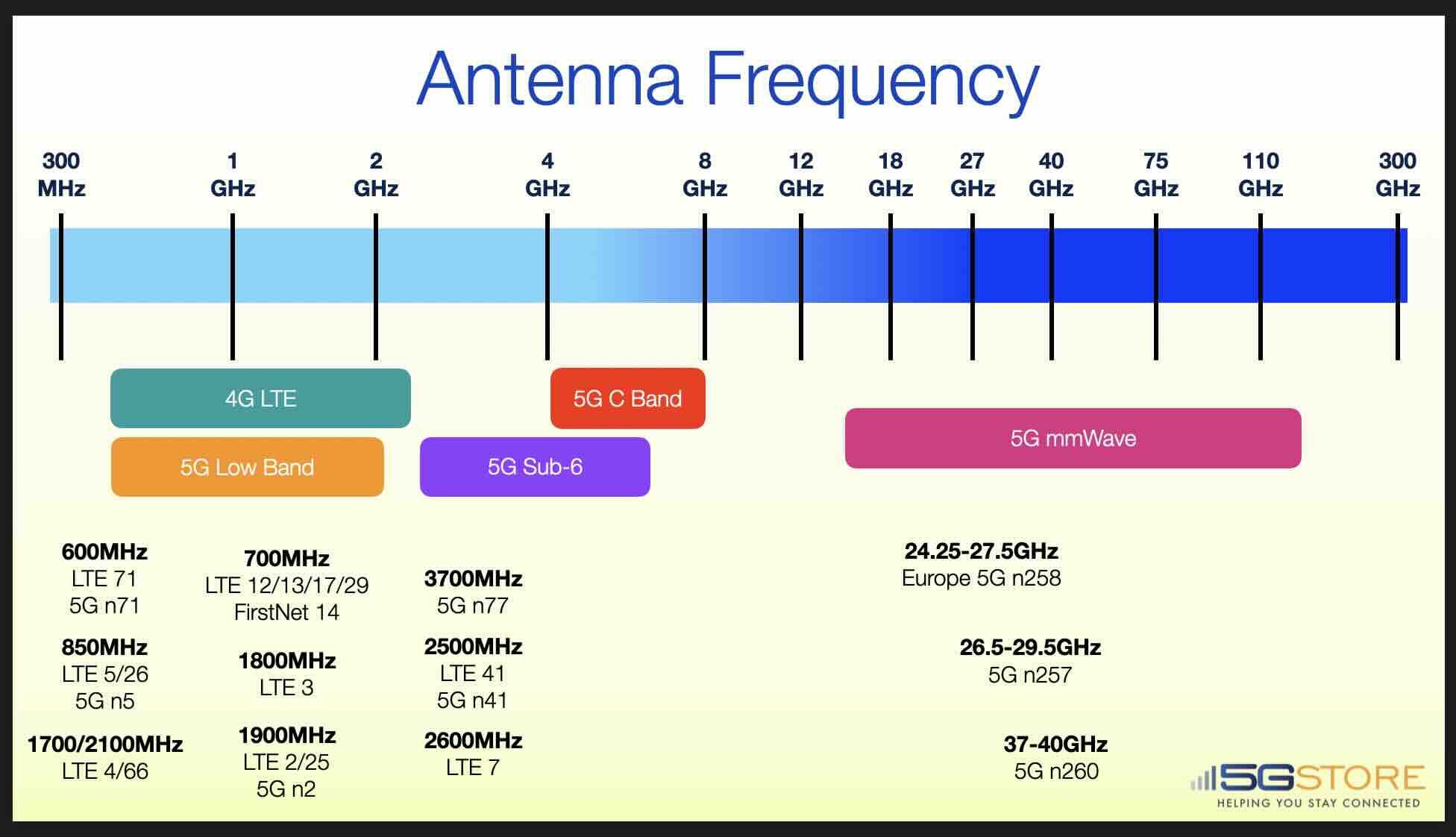


Antennas play a critical role in the transmission and reception of cellular signals. They are designed to emit or receive electromagnetic waves, which carry information such as voice, data, and video, over the air. In the case of cellular networks, antennas are used to communicate between the mobile devices and the base stations. When you make a call or send a message on your smartphone, your device sends the signal to the nearest base station via an antenna, which then relays the signal to its destination.
But what about antenna frequencies? How do they impact cellular communication?
LTE (Long-Term Evolution) and 5G (5th Generation) cellular frequencies are used for wireless communication over cellular networks. LTE and 5G use various frequency bands depending on the region and the cellular operator. Generally speaking, LTE uses lower frequencies than 5G. Some are similar however, but are expanded to include additional frequency ranges (e.g. LTE Band 71 and 5G Band 71). It's important to note that frequency bands used by LTE and 5G vary between countries and network operators.
The use of different frequency bands can impact the speed, coverage, and penetration of wireless signals. Higher frequency bands can provide faster data speeds and lower latency, but they may have lower coverage and penetration compared to lower frequency bands. This is why it's important to choose the right antenna frequency for your specific use case. Whether you're building a cellular network, designing a wireless device, or simply trying to improve the signal quality on your smartphone or modem, understanding antenna frequencies is essential.
At 5Gstore.com, we specialize in providing high-quality antennas for cellular networks, WiFi, and GPS. Our antennas are designed to meet the specific needs of your project, whether you're looking for a low-cost solution for a small deployment or a high-performance antenna for a large-scale network.
LTE Band 71 is a frequency band used by cellular networks in North America for LTE wireless communication. It is also known as the 600 MHz Band, as it operates in the frequency range of 617 MHz to 698 MHz.
Band 71 was made available for commercial use by the Federal Communications Commission (FCC) in 2017 after a successful auction of the spectrum. It was previously used for television broadcasting, but the shift to digital broadcasting created opportunities to free up this spectrum for wireless communication.
One of the main advantages of LTE Band 71 is its ability to provide better coverage in rural and suburban areas. The low frequency of 600 MHz allows for signals to travel farther and penetrate buildings more effectively than higher frequency bands, such as those used in urban areas.
LTE Band 71 is currently used by several cellular network operators in North America, including T-Mobile, which holds the largest amount of spectrum in this band.